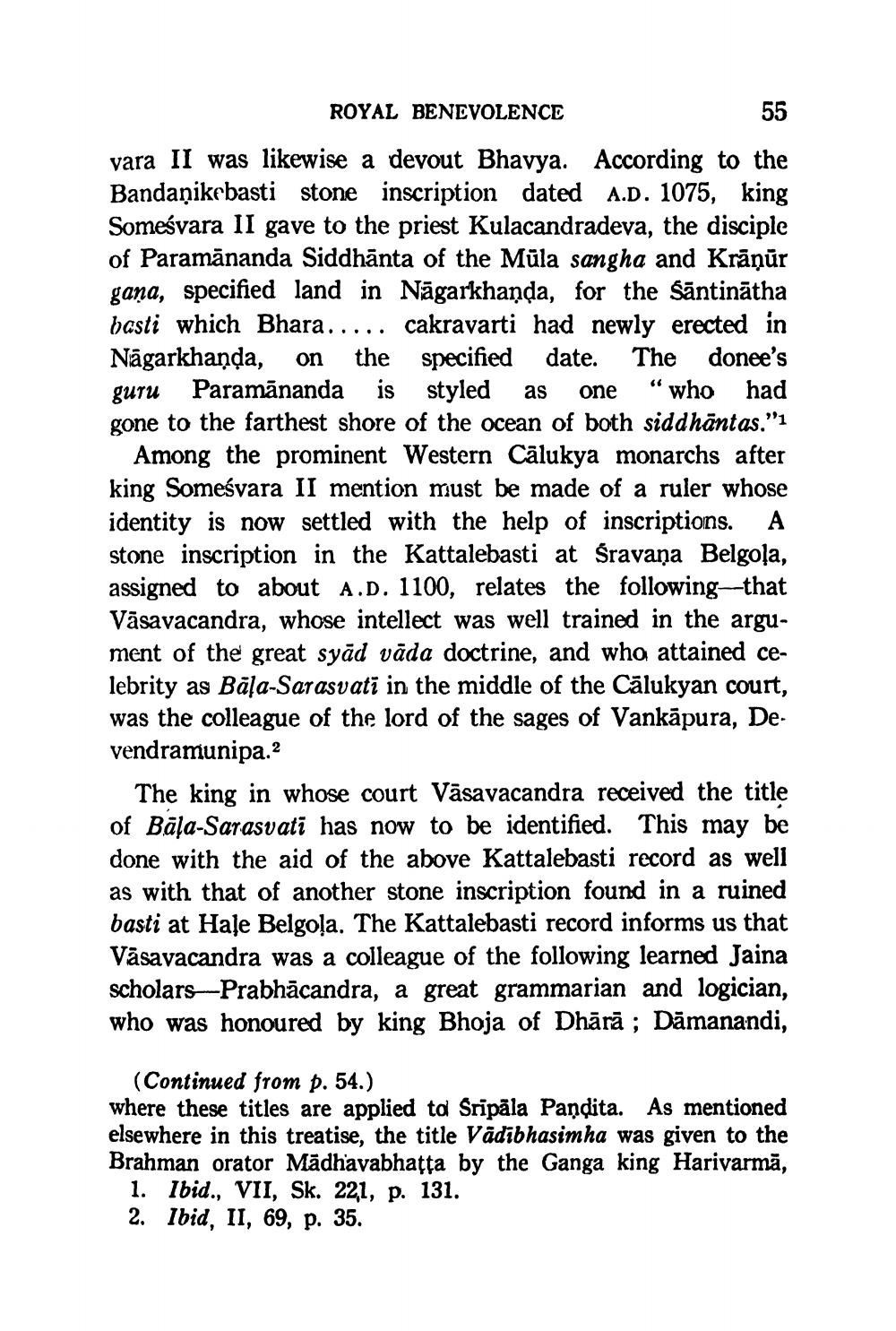________________
ROYAL BENEVOLENCE
55 vara II was likewise a devout Bhavya. According to the Bandaņikebasti stone inscription dated A.D. 1075, king Someśvara II gave to the priest Kulacandradeva, the disciple of Paramānanda Siddhānta of the Müla sangha and Krāņūr gana, specified land in Nāgarkhanda, for the Šāntinātha basti which Bhara..... cakravarti had newly erected in Nāgarkhanda, on the specified date. The donee's guru Paramānanda is styled as one “who had gone to the farthest shore of the ocean of both siddhāntas."1
Among the prominent Western Cālukya monarchs after king Someśvara II mention must be made of a ruler whose identity is now settled with the help of inscriptions. A stone inscription in the Kattalebasti at Sravana Belgoļa, assigned to about A.D. 1100, relates the following--that Vāsavacandra, whose intellect was well trained in the argument of the great syād vāda doctrine, and who attained celebrity as Bāla-Sarasvati in the middle of the Cālukyan court, was the colleague of the lord of the sages of Vankāpura, De. vendramunipa.
The king in whose court Vāsavacandra received the title of Bāla-Sarasvati has now to be identified. This may be done with the aid of the above Kattalebasti record as well as with that of another stone inscription found in a ruined basti at Hale Belgoļa. The Kattalebasti record informs us that Väsavacandra was a colleague of the following learned Jaina scholars Prabhācandra, a great grammarian and logician, who was honoured by king Bhoja of Dhārā ; Dāmanandi,
(Continued from p. 54.) where these titles are applied to Sripāla Pandita. As mentioned elsewhere in this treatise, the title Vädibhasimha was given to the Brahman orator Mādhavabhatta by the Ganga king Harivarmā,
1. Ibid., VII, Sk. 221, p. 131. 2. Ibid, II, 69, p. 35.




